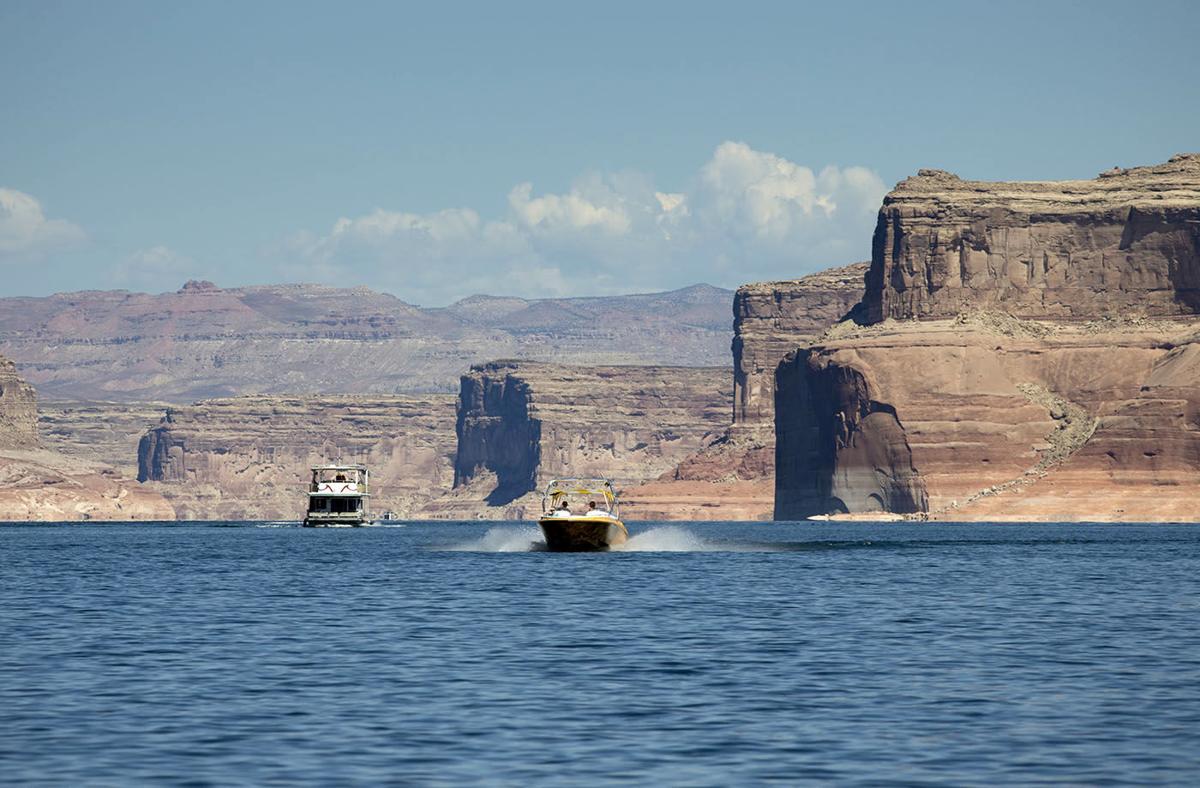El Niño has been a washout so far for the Colorado River Basin, which has led to a lower than normal forecast for the all-important spring-summer runoff into Lake Powell.
This week, the federal government’s Colorado River Basin Forecast Center predicted that the lake at the Utah border will get 80 percent of normal runoff between April and July. That was a lower forecast than in earlier months. In large part, that’s traced to a warm, dry February across the seven-state Colorado River Basin.
The low expected runoff does not mean a shortage in deliveries of Central Arizona Project water for 2017 — at least not yet. The U.S. Bureau of Reclamation has predicted a very low chance of a 2017 shortage but forecast a greater than 50 percent chance of a 2018 shortage.
If this spring’s weather is dry, the shortage odds would increase. But the medium-range forecast for March through May 2016 is for generally wet weather in the basin, although there’s little rainfall on the horizon expected through the first half of this month.
“The Colorado River Basin in general has not seen much increase in precipitation or streamflow” during the El Niño weather pattern, said Paul Miller, a senior federal hydrologist, at a briefing Friday on Colorado Basin conditions.
Typically, El Niño seasons bring heavy rains to the Southwest. But the El Niño rainfall pattern has historically been more uneven in the Upper Colorado River Basin that generates most of the river runoff that supplies the Lower Colorado and the CAP.
Overall, the 2015-16 El Niño will go down as one of the strongest on record, Miller said. It’s edged out the 1997-98 El Niño season which was also one of the strongest on record, he said.
But the jet stream has pushed the winter storms that usually accompany an El Niño to the Southwest and sometimes the Upper Colorado Basin to Northern California and the Pacific Northwest, Miller said.
“Those areas are not typically associated with a strong El Niño event,” he said.
Anotactors in the low runoff forecast was the presence of unusually dry soils and low soil moisture levels throughout the river basin starting last fall, said Brenda Alcorn, also a senior hydrologist for the river basin forecast center. The soil typically stays dry until snow starts to melt but it was drier than normal this fall and early winter.
Chuck Cullom, a CAP official, said if March and April are dry like February was, “that could push us closer to shortage. We won’t know until the season’s over.” But the current federal projection is that Lake Mead at the Nevada border will end this year at 2.5 feet above 1,075 feet, the point at which a shortage would be declared once the lake falls a bit below it.
“We’re hopeful that if conditions continue like they are and with our conservation efforts, we will have normal deliveries in 2017” to cities such as Tucson and Phoenix, farms, mines and Indian tribes, Cullom said.
Eric Kuhn, general manager of a big Colorado water agency, said he doesn’t see much chance of a 2017 shortage unless the dry weather continues and the tributaries to the Lower Colorado River in Arizona and Southern Utah provide significantly less water than normal. Typically, river such as the Little Colorado in Arizona and the Virgin in southern Utah provide the main Colorado about 800,000 acre-feet of water yearly. An acre-foot is enough water to cover an acre with a foot of water.
But if they only provide 660,000 acre-feet, “we’re getting close enough that there’s a low probability that you could end up” approaching a shortage in 2017, said Kuhn, general manager of the Colorado River Commission, an umbrella water agency for the state’s West Slope.
Many Californians have referred to El Niño as “El No-Show” because rainfall wasn’t that great in Southern California at least, said Cullom, CAP’s Colorado River program manager.
But so far, the federal Climate Prediction Center is generally forecasting wet conditions across the river basin for the next three months. From now until March 12, however, there’s only one storm predicted for Northern California that has a good chance of drifting over to the Colorado River Basin, Miller said.
Right now, the El Niño pattern is already weakening, and forecasters predict that next fall will bring a La Niña pattern. That typically brings dry weather to the Southwest and much of the Upper Colorado Basin.
“But there’s a lot of uncertainty with the models,” Miller said.





